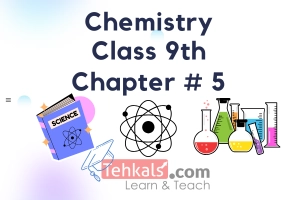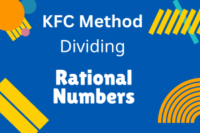Chemistry Class 9 Chapter 6
Published: 1 Oct 2023
Chemistry Class 9 Chapter 6 is about “Solutions”. This article includes topics such as Aqueous Solution, Solute and Solvent, Saturated, Unsaturated and Super Saturated, Types of Solutions such as Gaseous Solutions (Gas in Gas, Gas in Liquid, Gas in Solid), Liquid Solutions (Liquid in Gas, Liquid in Liquid, Liquid in Solid), Solid Solutions (Solid in Gas, Solid in Liquid, Solid in Solid) and also includes other topics like Concentration of Solution, Percentage Composition (Percentage Mass by Mass, Percentage Mass by Volume, Percentage Volume by Mass, Percentage Volume by Volume), Molarity, Solubility (Nature of the Solvent, Nature of the Solute, Pressure, Temperature), Solutions, Colloids and Suspension.
Chemistry Class 9 Chapter 6 Notes
Solutions
Chemistry Class 9 Chapter 6-MCQs
Solution
1. A homogeneous mixture of two or more than two components is called _________________.(a) solution
(b) Electrolyte
(c) Suspension
(d) None of these
Show Answer
solution
2. The _______of solution can be changed with in certain limits.
(a) Shape
(b) composition
(c) Properties
(d) All of these
Show Answer
composition
3. Solutions are not limited to _______state only.
(a) Solid
(b) liquid
(c) Gas
(d) Plasma
Show Answer
liquid
4. Alloy is the example of ____________solution.
(a) Solid
(b) Liquid
(c) Gas
(d) Plasma
Show Answer
Solid
5. A solution is made up of ___________components i.e solvent and solute.
(a) 5
(b) 3
(c) 2
(d) 6
Show Answer
2
6. A solution which is made of two components is called _____________solution.
(a) Aqueous
(b) Binary
(c) Saturated
(d) Unsaturated
Show Answer
Binary
Aqueous Solution
7. The solution which is formed by dissolving a substance in water is called on __________solution.(a) aqueous
(b) Binary
(c) Unsaturated
(d) Saturated
Show Answer
aqueous
8. Salt dissolved in water is an example of ____________solution.
(a) Aqueous
(b) Binary
(c) Saturated
(d) Both a and b
Show Answer
Both a and b
9. In aqueous solution, ___________is present in large amount and is termed as solvent.
(a) Alcohol
(b) water
(c) Acetic acid
(d) None of these
Show Answer
water
Solute and Solvent
10. Water has the ability to dissolve all the substances that is why water is called ____________solvent.(a) Universal
(b) Concentrated
(c) Dilute
(d) Both a and b
Show Answer
Universal
11. The component of solution which is present in amount is called solute.
(a) Larger
(b) Intermediate
(c) smaller
(d) None of these
Show Answer
smaller
12. The component of solution which is present in ____________amount is called solvent.
(a) Larger
(b) Smaller
(c) Intermediate
(d) All of these
Show Answer
Larger
13. A solute is dissolved in solvent to make ______________.
(a) Mixture
(b) Solution
(c) Compound
(d) Suspension
Show Answer
Solution
14. _____________solution is made by dissolving sugar and water.
(a) Vinegar
(b) Alkaline
(c) Sugar
(d) Salt
Show Answer
Sugar
To Download Complete Notes of Class 9 Chemistry Notes, Click the link.
Saturated Solution
Unsaturated Solution
Super Saturated Solution
15. The solution which cannot dissolve further amount of solute at a particular _____ is called saturated solution at that temperature.(a) Temperature
(b) Pressure
(c) Volume
(d) None of these
Show Answer
Temperature
16. When we add more __________in a saturated solution, it will not dissolve and settle down at the bottom.
(a) Solvent
(b) solute
(c) Both
(d) All of these
Show Answer
solute
17. A solution which can dissolve further amount of solute at a particular temperature is called _______solution.
(a) Super saturated
(b) Saturated
(c) unsaturated
(d) None of these
Show Answer
unsaturated
18. Unsaturated solution has _________amount of solute than is required to saturate it at a particular temperature.
(a) less
(b) Same
(c) More
(d) None of these
Show Answer
less
19. A solution which contains more amount of solute than it required to saturate it at a particular temperature is called __________solution.
(a) Saturated
(b) Super saturated
(c) Unsaturated
(d) All of these
Show Answer
Super saturated
Types of Solution
Gaseous Solutions
20. Which one is the example of gas in gas solution?(a) Air
(b) Cold drink
(c) Fog
(d) Smoke
Show Answer
Air
21. The example of gas in liquid solution is __________________.
(a) Air
(b) Cold drink
(c) Mercury
(d) None of these
Show Answer
Cold drink
22. Cold drinks are made from ______________ and water.
(a) $ CO_2 $
(b) $ NO_2 $
(c) $ H_2 $
(d) $ Cl_2 $
Show Answer
$ CO_2 $
23. Hydrogen gas adsorbed at palladium is the example of ___________________solution.
(a) Gas in gas
(b) Gas in liquid
(c) Gas in solid
(d) None of these
Show Answer
Gas in solid
Liquid Solutions
24. The example of liquid in gas solution is _______________.(a) Amalgam
(b) Fog
(c) Alcohol in water
(d) All of these
Show Answer
Fog
25. Alcohol in water is the example of ______________solution.
(a) Liquid in gas
(b) Liquid in liquid
(c) Liquid in solid
(d) None of these
Show Answer
Liquid in liquid
26. The example of liquid in solid solution is _______________.
(a) Mercury amalgams
(b) Smoke
(c) Humidity in air
(d) All of these
Show Answer
Mercury amalgams
27. Mercury is the only metal that is present in __________form.
(a) Solid
(b) liquid
(c) Gaseous
(d) Plasma
Show Answer
liquid
Solid Solutions
28. ______________is the example of solid in gas solution.(a) Fog
(b) Air
(c) smoke
(d) Mixture
Show Answer
smoke
29. Smoke is formed when _______________particles is mixed with air.
(a) Carbon
(b) Nitrogen
(c) Sulphur
(d) Hydrogen
Show Answer
Carbon
30. Sea water and other solution like sugar in water are the examples of __________ solution.
(a) Solid in gas
(b) Solid in liquid
(c) Solid in solid
(d) All of these
Show Answer
Solid in liquid
31. The Brass and bronze are the examples of ___________solution.
(a) Solid in gas
(b) Solid in liquid
(c) Solid in solid
(d) None of these
Show Answer
Solid in solid
32. Brass is an _____________.
(a) Alloy
(b) Solution
(c) Both a and b
(d) Suspension
Show Answer
Both a and b
33. Brass is a mixture of _________.
(a) Cu and Zn
(b) Cu and S
(c) Zn and Cl
(d) None of these
Show Answer
Cu and Zn
34. Bronze is an alloy of copper and _________________
(a) Potassium
(b) Barium
(c) Radon
(d) tin
Show Answer
tin
Concentration of Solution
35. The concentration of a solution is a ______________of the amount of solute in a given amount of solvent or solution.(a) Ratio
(b) Product
(c) Equilibrium
(d) None of these
Show Answer
Ratio
36. A solution which contains small amount of solute dissolved in the solvent is called ______solution.
(a) Concentrated
(b) dilute
(c) Super-saturated
(d) Saturated
Show Answer
dilute
37. A solution which contains ______ amount of solute dissolved in the solvent is called concentrated solution.
(a) Large
(b) Medium
(c) Small
(d) All of these
Show Answer
Large
Percentage Composition
38. The number of parts of solute present in _________parts of solvent is called percentage composition.(a) 10
(b) 50
(c) 70
(d) 100
Show Answer
100
39. The fraction of _________in a solution is called percentage composition.
(a) Solvent
(b) Solute
(c) Solution
(d) Suspension
Show Answer
Solute
40 The number of grams by mass of solute present in 100 grams by mass of solution is called percentage_____.
(a) Mass by mass
(b) Mass by volume
(c) Volume by mass
(d) Volume by volume
Show Answer
Mass by mass
41. 10
(a) 100
(b) 90
(c) 80
(d) 70
Show Answer
90
42. The number of grams by mass of solute present in $ 100 cm^3 $ of solution is called _______relationship.
(a) m/m
(b) v/m
(c) m/v
(d) v/v
Show Answer
m/v
43. $ \frac {mass \ of \ solute}{volume \ of \ solution} \times 100 $ it is the formula of :
(a) % m/v
(b) % v/m
(c) % m/m
(d) % v/v
Show Answer
% m/v
44. The volume in $ cm^3 $ of solute dissolved in 100 grams of solution is called ___________relationship.
(a) m/m
(b) v/v
(c) v/m
(d) m/v
Show Answer
v/m
45. The volume in $ cm^3 $ of a solute dissolved per $ 100 cm^3 $ of solution is called ______relationship.
(a) m/m
(b) v/v
(c) v/m
(d) m/v
Show Answer
v/v
46. 10 % solution of alcohol by volume means, $ 10 cm^3 $ of alcohol in sufficient volume of solvent to make _____ of solution.
(a) $ 100cm^3 $
(b) 100g
(c) 100ml
(d) 10ml
Show Answer
$ 100cm^3 $
47. Molarity is a concentration ________________.
(a) Number
(b) Ratio
(c) unit
(d) All of these
Show Answer
unit
Molarity
48. The number of moles of solute per $ dm^3 $ of solution is called ________.(a) Percentage composition
(b) Molarity
(c) Avogadro’s number
(d) None of these
Show Answer
Molarity
49. $ \frac{amount \ of \ solute in gram}{melecular \ mass \ of \ solute} $ it is the formula of :
(a) Mole
(b) $ N_A $
(c) Solubility
(d) None
Show Answer
Mole
50. Calculate molarity of a solution containing $ 7.50 \ mol \ of \ CaCO_3 $ in enough water to make $ 1.50 dm^3 $ of solution?
(a) 5.50 M
(b) 5.0 M
(c) 0.5 M
(d) 0.05 M
Show Answer
5.0 M
51. What will be molarity of solution if $ 30cm^3 \ of \ 2.5 M \ of \ CaCO_3 $ solution is diluted to $ 280 cm^3 $?
(a) 0.267 M
(b) 2.067 M
(c) 6.720 M
(d) 3.458 M
Show Answer
0.267 M
Solubility
52. The amount of solute in grams dissolved in 100 grams of solvent to prepare a __________solution at a given temperature is called solubility.(a) saturated
(b) Super- Saturated
(c) Unsaturated
(d) Mixture
Show Answer
saturated
53. $ NaNO_3 $ is more soluble than _______ in water.
(a) NaCl
(b) LiCl
(c) AgCl
(d) CaCl
Show Answer
AgCl
54. $ \frac{Wt. \ of \ solute} {Wt. \ of \ solvent} \times 100 $ it is the general formula of :
(a) Molarity
(b) solubility
(c) Percentage composition
(d) None of these
Show Answer
solubility
Nature of the Solvent
55. Which factor depends upon solubility of solute?(a) Pressure
(b) Temperature
(c) Nature of solute & solvent
(d) All of these
Show Answer
All of these
56. NaCl has greater solubility in water than ____________.
(a) Benzene
(b) Methane
(c) Hydrochloric acid
(d) Chloric acid
Show Answer
Benzene
Nature of the Solute
57. If a solute is changed and solvent remain the same, the solubility of solute also _________.(a) Remain same
(b) Constant
(c) changes
(d) Decreasing
Show Answer
changes
58. _____________is the general principle of solubility.
(a) Like dissolve like
(b) Ductility
(c) Sonorous
(d) All of these
Show Answer
Like dissolve like
59. The Polar substances are _______ in polar solvents.
(a) Insoluble
(b) soluble
(c) Partially soluble
(d) None of these
Show Answer
soluble
60 What is the example of ionic solid and polar covalent compound that is soluble in water?
(a) NaCl, KCl
(b) $ Na_2CO_3 $, Sugar
(c) Glucose, alcohol
(d) All of them
Show Answer
All of them
61 Non-polar substances are insoluble in ____________solvents.
(a) Polar
(b) Non-polar
(c) Partially polar
(d) None of these
Show Answer
Polar
62. Which of the following is insoluble in water?
(a) Sugar
(b) benzene
(c) Glucose
(d) All of these
Show Answer
Benzene
63. Non-polar substances are _____________in non-polar solvents.
(a) Soluble
(b) Partially soluble
(c) Insoluble
(d) None of these
Show Answer
Soluble
64. Grease and paints are soluble in _________.
(a) Petrol
(b) Ether
(c) $ CCl_4 $
(d) All of them
Show Answer
All of them
65. Lithium Chloride is highly soluble in water but _________is not.
(a) gasoline
(b) Sugar
(c) NaCl
(d) Glucose
Show Answer
gasoline
66. Gasoline mixes readily in benzene but ________does not.
(a) Grease
(b) LiCl
(c) Paints
(d) Ether
Show Answer
LiCl
67. The polarity of water molecules plays on important role in the formation of solutions of ________compounds in water.
(a) Ionic
(b) Metallic
(c) Dative
(d) Covalent
Show Answer
Ionic
68. The solution formation process with water as the solvent is referred to as __________.
(a) Chlorination
(b) Hydrogenation
(c) Hydration
(d) None of these
Show Answer
Hydration
69. Lithium chloride is not soluble in benzene because they differ widely in _____________.
(a) Bonding
(b) Polarity
(c) Inter molecular forces
(d) All of them
Show Answer
All of them
70. Liquid solutes and solvents that are not soluble in each other are called ____________liquids.
(a) immiscible
(b) Miscible
(c) Mobile
(d) None of these
Show Answer
immiscible
71. Liquids that dissolve freely in any proportion are called ________liquids.
(a) Immiscible
(b) Miscible
(c) Mobile
(d) All of these
Show Answer
Miscible
72. Ethanol and water can mix freely because they are.
(a) miscible
(b) Immiscible
(c) Mobile
(d) None of these
Show Answer
miscible
Pressure
73. Solids and liquids are in compressible therefore the solubilitiesof solids and liquids are not affected by changing the _______________.(a) Temperature
(b) Volume
(c) Pressure
(d) All of these
Show Answer
Pressure
74. Solubility of gases ________with increases in pressure.
(a) Decrease
(b) increase
(c) Remains same
(d) None of these
Show Answer
increase
Temperature
75. Increasing the temperature usually resulting in the decrease of ________solubility.(a) Gas
(b) Liquid
(c) Solid
(d) Plasma
Show Answer
Gas
76. At _______temperature, gases are generally less soluble.
(a) Lower
(b) Normal
(c) Higher
(d) None of these
Show Answer
Higher
77. Solubility of ________ increases with increase in temperature, but this does not always happen.
(a) Gas
(b) Liquid
(c) solid
(d) All of these
Show Answer
solid
78. The solubility of some solutes increases with rise in temperature. For example _______________.
(a) $ KNO_3 $
(b) $ CaCl_2 $
(c) $ Pb{(NO_3)}_2 $
(d) $ All \ of \ these $
Show Answer
All of these
79. The solubility of some solutes __________ with increase in temperature. For example $ Ce_2(SO_4), Li_2CO_3 \ and \ CaO $ etc.
(a) Decrease
(b) Remains same
(c) Increases
(d) None of these
Show Answer
Decrease
80. The solubility of NaCl and KBr is ___________ by increase or decrease in temperature.
(a) Decrease
(b) Not affected
(c) Increase
(d) Remains same
Show Answer
Not affected
Solution
81. The particles of ___________ cannot be seen with naked eye.(a) Colloids
(b) Suspension
(c) Solution
(d) None of these
Show Answer
Solution
82. The particles of solution _______ through filter paper.
(a) Can pass
(b) Cannot pass
(c) Both a and b
(d) None of these
Show Answer
Can pass
Colloids
83. The particles that are intermediate in size between those in solution and suspension form mixture is known as __.(a) Solution
(b) Colloids
(c) Suspension
(d) All of these
Show Answer
Colloids
84. The particles between _________ may form colloids.
(a) 1nm to 100nm
(b) 0.1nm to 5nm
(c) 50nm to 200nm
(d) None of these
Show Answer
1nm to 100nm
85. In colloids, solute particles are not _______with solvent.
(a) Hetrogenized
(b) Homogenized
(c) Mixturized
(d) Suspension
Show Answer
Homogenized
86. The particle of colloid ______ through filter paper.
(a) Can pass
(b) Cannot pass
(c) Both a and b
(d) All of these
Show Answer
Can pass
87. A mixture of starch in water is an example of :
(a) Solution
(b) Colloid
(c) Suspension
(d) Mixture
Show Answer
Colloid
Suspension
88. A suspension is a ___________mixture of undissolved particles in a given medium.(a) Heterogeneous
(b) Same
(c) Homogeneous
(d) None of these
Show Answer
Heterogeneous
89. The ____________of suspension is not uniform throughout.
(a) Structure
(b) Properties
(c) composition
(d) None of these
Show Answer
composition
90. In suspension, the ____________particles are large and can be seen with naked eye.
(a) Solvent
(b) solute
(c) Mixture
(d) None of these
Show Answer
solute
91. The mixture of sand and water is the example of :
(a) Solution
(b) Colloid
(c) Suspension
(d) Mixture
Show Answer
Suspension
92. The process of setting of particles at the bottom is called ___________.
(a) Sedimentation
(b) Purification
(c) Galvanization
(d) None of these
Show Answer
Sedimentation
93. The particles of suspension _______through filter paper.
(a) Can pass
(b) Cannot pass
(c) Restricted
(d) Accepted
Show Answer
Cannot pass
94. A mixture of ___________and water is a suspension.
(a) chalk
(b) Sugar
(c) Benzene
(d) Hydrogen
Show Answer
chalk
95. Medicines, antacid, antibiotics and paracetamoletc are the examples of :
(a) Solution
(b) Colloids
(c) suspension
(d) Mixture
Show Answer
suspension
96. The molarity of NaOH solution by dissolving 4g of it in 250 water is:
(a) 0.4M
(b) 0.2M
(c) 0.8M
(d) 0.1M
Show Answer
0.4M
Review Exercise Chapter # 6
1. Which of the following solution is more dilute:(a) 1.0M
(b) 0.5M
(c) 0.05M
(d) 0.005M
Show Answer
0.005M
2. Milk is an example of
(a) Solution
(b) Saturated solution
(c) Colloids solution
(d) Suspension
Show Answer
Colloids solution
3. Water droplet in air is an example of solution.
(a) Gas in gas
(b) Gas in liquid
(c) Liquid in Gas
(d) Liquid in Liquid
Show Answer
Liquid in Gas
4. When there is a low concentration of solute in a solution, it is known as:
(a) Dilute solution
(b) Saturated solution
(c) Concentrated solution
(d) Super saturated solution
Show Answer
Dilute solution
5. What is the molarity of a $ NaNO_3 $ solution made by diluting $ 250.0cm^3 $ of a 1.60 M solution to a final volume of $ 400cm^3 $:
(a) 1.20 M
(b) 1.00 M
(c) 0.200 M
(d) 0.160 M
Show Answer
1.00 M
6. What is the concentration, in % mass by volume (m/v) of a solution containing $ 15.0g KCl \ in \ 600.0 cm^3 $ solution?
(a) 5.00 %
(b) 2.00 %
(c) 0.200 %
(d) 2.50 %
Show Answer
2.50 %
7. When KCl dissolves in water, the following will be produced:
(a) $ K \ and \ Cl $
(b) $ K^+ \ and \ Cl^- $
(c) $ K \ and \ CL_2 $
(d) $ None \ of \ these $
Show Answer
$ K^+ \ and \ Cl^- $
8. 2 moles of $ Na_2SO_4 $ are dissolved in one $ dm^3 $ of solution. Molarity of solution.
(a) 1 M
(b) 2 M
(c) 3 M
(d) 0.5 M
Show Answer
2 M
9. Molarity is the number of moles of solute dissolved in:
(a) $ 1 kg $ of solvent
(b) $ 1 kg $ of solution
(c) $ 1 dm^3 $ of solvent
(d) $ 1 dm^3 of solution $
Show Answer
1kg of solution
10. The molarity of a NaOH solution by dissolving 4g of it in 250 ml water is :
(a) 0.4 M
(b) 0.8 M
(c) 0.2 M
(d) 0.1 M
Show Answer
0.4 M
Chemistry Class 9 MCQs (All Chapters)

- Be Respectful
- Stay Relevant
- Stay Positive
- True Feedback
- Encourage Discussion
- Avoid Spamming
- No Fake News
- Don't Copy-Paste
- No Personal Attacks



- Be Respectful
- Stay Relevant
- Stay Positive
- True Feedback
- Encourage Discussion
- Avoid Spamming
- No Fake News
- Don't Copy-Paste
- No Personal Attacks





